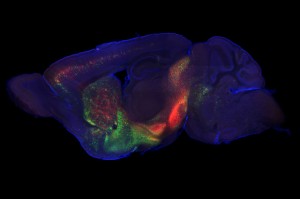European scientists have identified a molecular switch that plays a crucial role in the establishing the formation of memory and addiction. (Science Daily).
Studies have found that learning and memory formation evolve from new connections made between neurons in the brain. Neuronal signals pass from one nerve cell to another via chemical compounds known as neurotransmitters. This signal is the basis for any learning process in the brain. It sets forth a sequence of cellular events that eventually alters neuronal connectivity. This results in the formation of memory. Drugs and alcohol can alter neuronal connectivity and create patterns of undesirable behavior.
The scientists have found that the molecular switch (an expression of the gene RyR2) is involved in a sustained release of calcium. This leads to neuronal plasticity (formation of new connections in the brain), specifically with the RyR2 protein being expressed in areas of the brain associated with cognition (and thus addiction). The expression of the RyR2 protein and the release of calcium was induced by the administration of nicotine to mice, thus suggesting that the induction of RyR2 plays a crucial role in the process of learning, memory formation, and development of addictive behaviors. When the scientists reduced the activation of RyR2, they found that it diminished behavior associated with learning, memory and addiction. This demonstrated that RyR2 is necessary for the long-term neuronal changes that lead to addiction.
It has been previously accepted that only the first step of neuronal plasticity involves calcium, which increases at the synapse (or site of neuronal connection). However, these scientists are challenging this notion by showing that in the second step, the calcium signaling will induce necessary gene expression in which a synthesis of proteins will lead to new or reinforced synaptic connectivity.
The study, which is published in EMBO Journal, further advances our understanding of the molecular processes behind memory and addiction. Many hope that it will lead to new strategies for treating drug and alcohol addiction and dealing with memory loss as a result of neurodegenerative diseases like Alzheimer’s.




